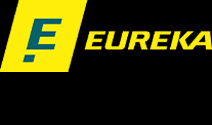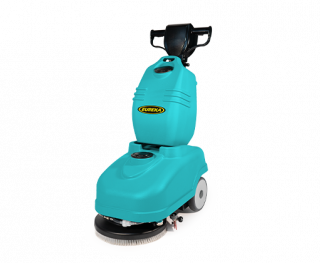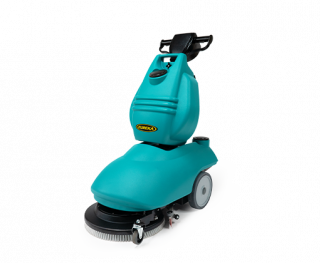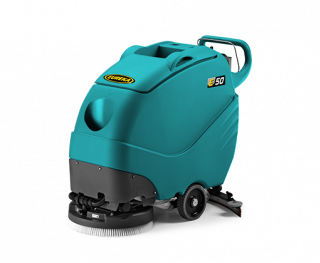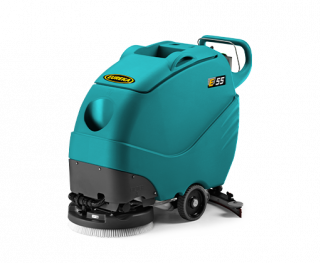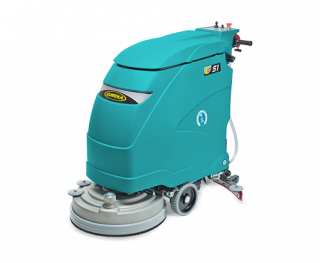FLOOR POLISHER MACHINE vs SINGLE DISC SCRUBBER DRYER
Scrubber dryers and floor buffer machines, are designed for very different primary use. To assess its efficiency and appropriateness of use, it is therefore essential to pay close attention to the objective to be pursued choosing one.
Comparing floor cleaning and maintenance machines
Let's go step by step:
- What is a floor polisher?
- What is a single-disc scrubber dryer?
- Floor polishing machine vs single disc scrubber dryer. Which is better?
If, on the other hand, the difference between these machines is already clear to you, in this article you can still find useful information on when and why a single disc scrubber drier is preferable to a cleaning machine with twin brushes.
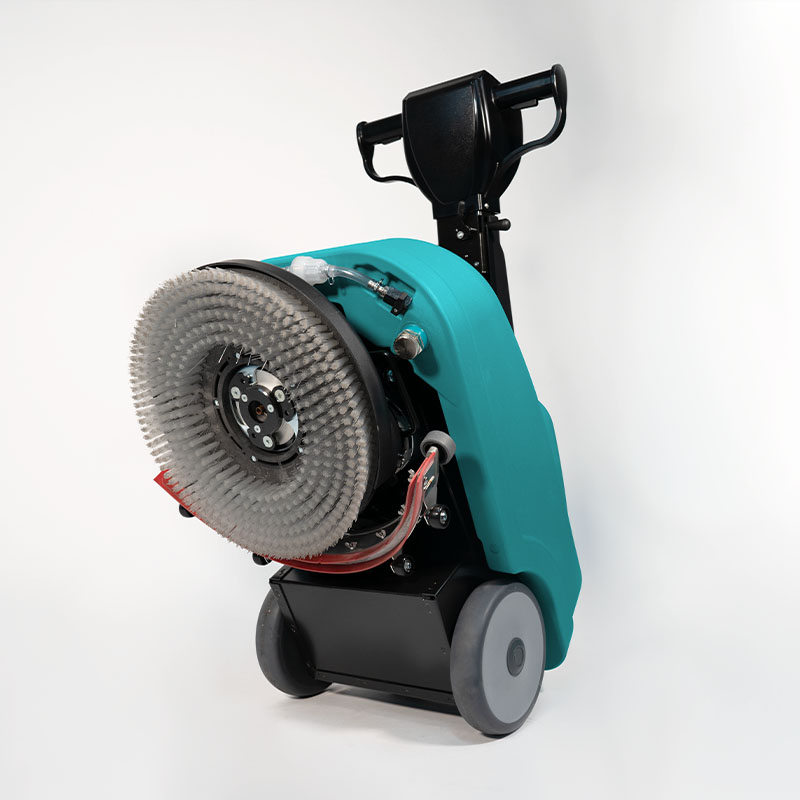
What is a floor polisher machine?
The floor polisher, and buffer machines, are born as an evolution of dry sanders, a machine used today especially for polishing wax-treated floors.
They consist of an engine that rotates a disc (pad or brush) very quickly, exerting sufficient ground pressure, thanks to the engine’s weight, to perform thorough cleaning, sanding, de-waxing and polishing.
They are machines that require a certain strength and competence of use, since the rotation of the brush tends to impose a lateral movement motion. Despite the great versatility of use, they are therefore recommended for a professional audience. Pressure, type of brush/pad and rotation speed (when variables) must be set carefully to avoid irreparable damage to the flooring.
These single-brush machines are usually powered by cable, designed for prolonged use in areas with power outlets. They are often equipped with a speed modulator and, in some cases, with a small container for the cleaning solution, which allows the machine to dissolve dirt from the floor, but without collecting it the dirt moved from the floor. To do this, a second passage with a liquid vacuum is required.
What is a single-disc scrubber dryer?
Single-disc scrubber dryers are an evolution of the above machines.
Within the range of floor scrubber dryers, they are recognizable as the most compact models (in Eureka, for example, the E36, E46, E50, E55 or E51), suitable for cleaning areas rich in size or limited size. Like buffer machines, they have a single rotating disc, and both fall into the broad category of floor maintenance machines. The floor scrubber dryers are, however, optimized for washing, with large tanks that allow the supply of adequate water on the ground, and efficient systems consisting of a squeegee and powerful vacuums, installed on the machine for contextual drying when washing. They are usually available with battery or cable power.
Floor polishing machine vs single disc scrubber drier. Which is better?
A polisher cannot be replaced by a single-disc scrubber in the floor sanding works, even if new diamond pads or sanding plates allow some industrial single-disc scrubber dryers (e.g. the Eureka E51) to manage certain types of work.
Cleaning operations, however, are performed in most cases and with better results by a floor scrubber, which can also be used for polishing actions, if necessary.
| FLOOR POLISHING MACHINE | SINGLE DISC SCRUBBER DRYER | |
|---|---|---|
| CHARACTERISTICS | ||
| Power supply | Cable only | Battery or cable |
| Tanks | NO (only some models have limited capability water dispensers) | YES (capacious, both for clean water and for recovery water) |
| Drying | NO | YES (with optimized squeegee and suction motors) |
| Ground pressure | Determined by the weight of the motor and the brush plate | Determined by the weight of the motor and the brush plate. In some models (es. Eureka E50-55), the pressure is increased by the weight of the water loaded in the tanks. |
| Brush rotation speed | High (Optimized for sanding and polishing; in some cases, modular.) | Contained (Optimized for washing functions; preserves the engine by stressing it less) |
| Traction | Motor transmitted by the brush, the only point of contact on the ground, is to be contrasted and addressed with operator effort | Automatic or manual. Control facilitated by the wheels |
| FUNCTIONS | ||
| Smoothing function | Primary function | Use not stated |
| Polishing function | Primary function | Possible, with specific, not to abrasive pads |
| Basic cleaning function | Suitable on filthy and encrusted surfaces. The management of the washing solution and its drying is not very efficient. | Primary function |
| Daily cleaning | Possible, with caution, on small surfaces. The rotation speed could ruin the flooring. Limited tanks (where present) and the absence of vacuums make the process inefficient and complex. | Primary function |
Single brush polishers can be used for cleaning functions. Still, the required attention and complexity of the operations would make it very expensive.
The main considerations to remember in choosing your floor cleaning equipment are:
- Single brush polishing machines do not have a dirty water collection system. The floor, therefore, remains wet and slippery after washing. It must be dried separately with a vacuum cleaner (i.e. an additional machine) or with rags or mop, but in these cases, a good part of the dirt removed during cleaning is spread again on the ground and not removed.
- They do not have water tanks or are tiny for the models that have them. To wash well, an adequate flow of water is essential to make a vehicle for removing dirt. Low-capacity tanks prevent adequate flow and/or empty quickly, requiring continuous stops to carry out refills.
- The polisher on the market all requires cables. Limitations are of two types. First, the range of action allowed depends directly on the power cable length and the placement of power outlets in the space; second, during operations, it is extremely difficult for the cable not to come into contact with the wet floor. In the case of damaged electrical cables, this represents a danger to operator safety and involves continuously dragging dirt back to the newly cleaned areas.
- Driving a polisher requires professional skills in the choice of abrasives and machine management, at the risk of permanently damaging the flooring
- Conducting a polishing machine is physically demanding and not very ergonomic due to the movement of the brush transmitted to the conduction handle, which the operator must continuously contrast.
- Even if the price of a polisher/buffer is usually lower than a scrubber dryer, the working time necessary to use them, even just to clean small areas, is much greater. Therefore, from an economic point of view, purchasing a scrubbing machine quickly guarantees much lower cleaning management costs for the company.
